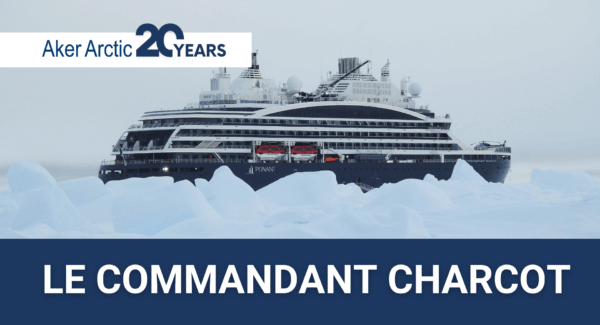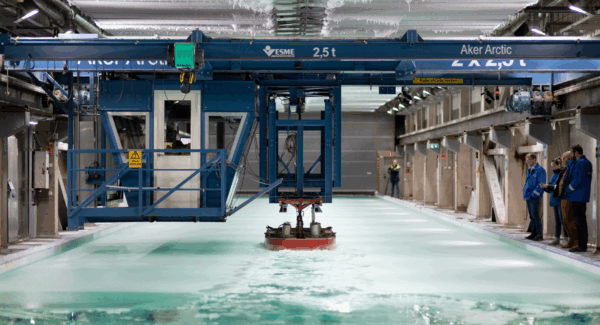Icebreaking needs grow despite warmer winters
Estonian, Finnish, and Swedish exports and imports rely heavily on maritime transportation. The Estonian State Fleet, Finnish Transport Infrastructure Agency, and Swedish Maritime Administration share some perspectives on the future of winter navigation and the measures required to ensure the continuity of maritime transport in the Baltic Sea.
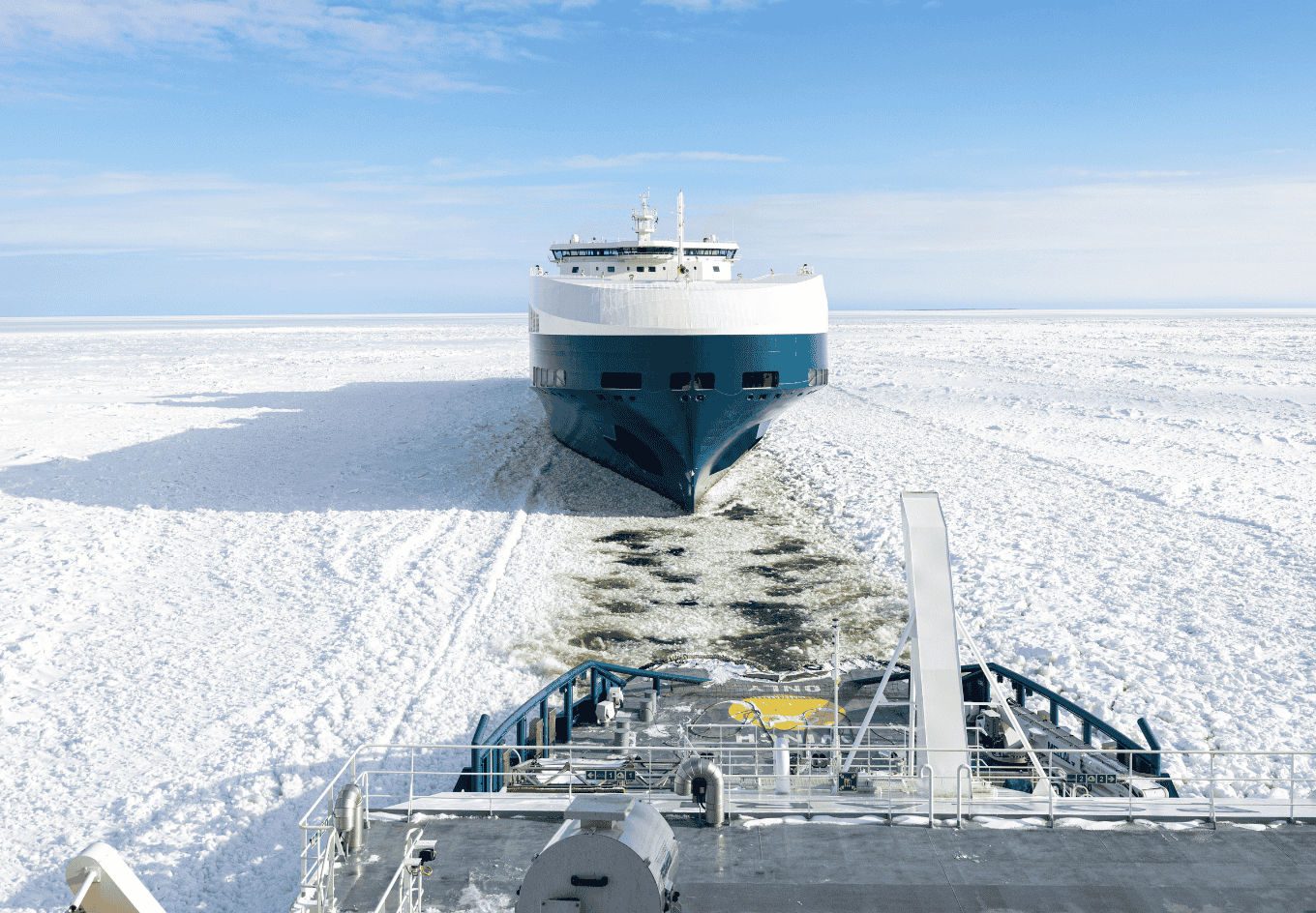
Head of Maritime Transport unit Helena Orädd from the Finnish Transport Infrastructure Agency (FTIA) and PL5 Project Manager Jorma Kaldasaun from the Estonian State Fleet anticipate an increasing need for icebreaking assistance due to evolving ice conditions and the growing number of large commercial vessels with limited ice-going capabilities entering the Baltic Sea.
“Ice conditions around Finland are becoming more unpredictable, varying significantly from year to year and creating more dynamics in the ice fields,” Orädd explains. “During mild winters, wind-driven ice forms slush barriers that are difficult for commercial vessels to navigate. Simultaneously, wide open water areas between ice fields pose challenges for an aging icebreaking fleet that is not optimised for such conditions.”
Average winters will persist
Kaldasaun refers to research conducted by Tallinn University of Technology in 2023, predicting how winters will evolve over the next 25 years. Despite climate change, Estonia’s ice conditions are expected to persist. While only 3% of winters will be classified as severe, 70% will remain average, continuing to impact commercial traffic.
Orädd adds that one of the key challenges of changing winter patterns is the difficulty of forecasting weather beyond a few days. When a sudden icebreaking need arises in the Bay of Bothnia, it takes days to transfer, with possible stormy weather causing further delays.
Sweden expects a surge in traffic
Head of Icebreaking Operations Amund Lindberg, from the Swedish Maritime Administration, highlights that, while much discussion centres on larger and wider commercial vessels, the increase in regular traffic should not be overlooked.
“Industrial investments in northern Sweden are expected to increase traffic only to Luleå by 300%, raising the number of vessels from 700 to approximately 2000 per year,” Lindberg says.
To accommodate Panamax-sized vessels year-round, the Swedish government is widening the seaway to Luleå as part of the Malmporten project.
“The shift toward just-in-time deliveries has reversed the impact of less severe ice conditions. In addition, potential offshore wind investments and total defence requirements add to the demand for icebreaking services,” Lindberg notes.
Close cooperation
As close neighbours, Finland, Sweden, and Estonia collaborate on winter navigation, for example, through initiatives such as the EU funded project WINMOS (Winter Navigation Motorways of the Sea). Finland and Sweden have a strong operational partnership in the Bay of Bothnia, which freezes over annually.
The shifting geopolitical landscape has further strengthened cooperation, bringing new considerations to discussions on winter navigation safety, reliability, and military mobility.
Orädd highlights that Finnish military transports partly utilise vessels well-equipped for winter conditions already trading in the area, whereas Kaldasaun anticipates increased demand for assistance due to the presence of NATO vessels, which are not ice-classed. Lindberg underlines the critical importance of safeguarding exports and imports, particularly in times of crisis.
All three countries are also exploring offshore wind investments. As part of WINMOS III, researchers are studying how ice dynamics change as ice moves through turbine areas, deforms and refreezes, and how this affects icebreaking and winter navigation.
A versatile future fleet
When discussing a potential future icebreaking fleet, Orädd, Lindberg and Kaldasaun emphasise that their views are purely operational, as they do not have decision-making authority regarding acquisitions.
Finland’s icebreaking fleet currently comprises ten icebreakers, owned by Arctia and Alfons Håkans. Nine operate regularly in the Baltic Sea, most classified as A-class icebreakers. Finland’s only B-class icebreaker, Voima, is over 70 years old, and the government has decided to replace her with a new B+ icebreaker. Over the next decade, the icebreakers Sisu and Urho, built in 1975 and 1976, will also need replacement.

Orädd, who supervises the WINMOS III project, states that the future Finnish fleet should be more versatile, consisting of icebreakers of various sizes and capabilities to adapt to changing conditions.
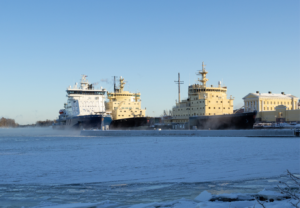
“I believe the future fleet should include several smaller B+ icebreakers, a stronger version of B, alongside our newest A-class icebreakers Polaris, Fennica,and Nordica,” Orädd suggests. “This approach would be more cost-efficient for tasks, such as opening the season in the Bay of Bothnia, while preserving A-class icebreakers for when they are most needed.”
Estonia to replace Tarmo
Estonia currently operates three icebreakers: two in the Gulf of Finland and one in Pärnu, a region with the challenge of shallow waters freezing easily. Botnica is Estonia’s largest and newest icebreaker, whereas Tarmo is 62 years old.

EVA 316, converted into an icebreaker in 2005, serves Pärnu Harbour. All three icebreakers were built in Finland.
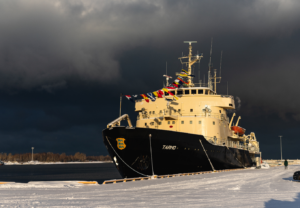
Estonia has decided to replace Tarmo with a completely new design, capable of both shallow-water operations in Pärnu and regular icebreaking duties in the Gulf of Finland. EVA 316 is also nearing the end of her operational lifespan and will require replacement within the next decade.
“We are grateful for Aker Arctic’s comprehensive feasibility study for a new combination icebreaker, supporting our acquisition process,” Kaldasaun says.
Sweden requires multiple icebreakers
Sweden’s fleet consists of six icebreakers: three A-class icebreakers of the Atle/Urho-class, which have kept Swedish harbours open for 50 years, the Polar Icebreaker Oden, the mid-sized icebreaker Idun (recently acquired from Norway), and the smaller icebreaker Ale, which serves the Bay of Bothnia and Lake Vänern.

Lindberg anticipates Sweden will need to acquire two to three new Atle/Urho-class sized icebreakers over the next decade to support increasing demands in northern Sweden. The country’s current acquisition project, now named Project New Icebreakers, is progressing, though a final decision on construction has yet to be made.
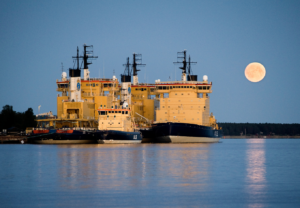
“Simultaneously, we must replace our aging icebreakers, potentially acquiring one to three additional smaller icebreakers to minimise fuel and operational costs,” Lindberg says.
He acknowledges that investing in icebreakers is a significant financial commitment, requiring careful deliberation. However, the lengthy acquisition process necessitates timely decisions to ensure the continued security of maritime transportations.
“We cannot design our fire brigade based on the assumption that nothing will catch fire. The same principle applies to icebreaking,” Lindberg concludes.
Text by Catarina Stewen
